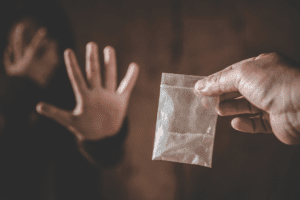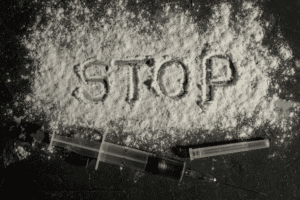Are you a cocaine user? Do you think you have developed an addiction to the drug? If so, you’re not alone. Our substance abuse treatment center in Florida can provide the help you need to recover.
 Transformations Treatment Center, a leading addiction treatment center in Delray Beach, FL, provides a sanctuary of hope for those struggling with addiction to cocaine. Our cocaine addiction treatment center is staffed by a dedicated team of addiction specialists and mental health professionals, all employing a compassionate and individualized approach. We’re committed to guiding you through every step of your journey toward recovery, offering cutting-edge treatment options and supportive care tailored to your specific needs at our specialized cocaine addiction rehab. Our mission is to empower you to reclaim your life, one step at a time.
Transformations Treatment Center, a leading addiction treatment center in Delray Beach, FL, provides a sanctuary of hope for those struggling with addiction to cocaine. Our cocaine addiction treatment center is staffed by a dedicated team of addiction specialists and mental health professionals, all employing a compassionate and individualized approach. We’re committed to guiding you through every step of your journey toward recovery, offering cutting-edge treatment options and supportive care tailored to your specific needs at our specialized cocaine addiction rehab. Our mission is to empower you to reclaim your life, one step at a time.
If you or someone you love has a cocaine use disorder, reach out to our team at (800) 270-4315 to begin the journey toward recovery at our cocaine addiction treatment center today.
Cocaine addiction pulls individuals into a relentless cycle of extreme euphoria followed by crushing lows, fostering both physical and psychological dependency. This condition not only disrupts the brain’s natural reward mechanisms but also leads to significant changes in behavior and decision-making processes. Our comprehensive treatment for cocaine addiction delves into the core of cocaine addiction, examining its profound effects on the brain’s chemistry and function. We explore the psychological triggers and environmental factors that often contribute to addiction, emphasizing the critical role of professional intervention in breaking this cycle. Through a blend of education, therapy, and support, our cocaine rehab center aims to empower clients with the knowledge and tools necessary to understand and combat their addiction, laying the groundwork for a sustainable recovery. Our approach to substance abuse treatment is rooted in compassion and evidence-based practices, designed to address the unique challenges faced by those struggling with cocaine addiction.
Continued cocaine use not only risks overdose but also leads to severe cardiovascular and neurological conditions, impacting overall health and well-being. Extended exposure can deteriorate the heart’s structure and function, provoke seizures, and engender persistent cognitive deficits. Our educational approach to cocaine addiction treatment aims to shed light on the immediate dangers and long-term health risks associated with cocaine addiction, including the potential for co-occurring mental health disorders like depression and anxiety. This comprehensive awareness underscores the importance of early intervention and holistic treatment to mitigate these profound effects on an individual’s physical and mental health.
Cocaine addiction manifests through a wide array of detrimental side effects that can affect every aspect of an individual’s life. Understanding these effects is crucial for recognizing the need for professional intervention and support.
At Transformations Treatment Center, we understand the profound impact cocaine addiction has on an individual’s physical health, mental well-being, and overall life quality. Our comprehensive approach to cocaine addiction treatment addresses these challenges head-on, offering medical detox, personalized therapy, and aftercare planning designed to empower individuals toward a lasting recovery. Recognizing these side effects as warning signs is the first step on the path to rehabilitation and recovery.
Our holistic recovery approach to cocaine addiction treatment addresses the physical, psychological, emotional, and social aspects and symptoms of cocaine addiction. Through a blend of medical detox, therapy, and personalized care plans, we provide a pathway to a healthier, drug-free life.
 Overcoming cocaine addiction begins with a critical and challenging phase: detoxification. At Transformations Treatment Center, we recognize detox as the foundational step toward recovery. Our comprehensive medical detox program is designed to support individuals through the cocaine withdrawal process with the utmost care and professionalism, offering 24/7 medical supervision, medication-assisted treatment (MAT), and emotional support to navigate this crucial stage safely and effectively.
Overcoming cocaine addiction begins with a critical and challenging phase: detoxification. At Transformations Treatment Center, we recognize detox as the foundational step toward recovery. Our comprehensive medical detox program is designed to support individuals through the cocaine withdrawal process with the utmost care and professionalism, offering 24/7 medical supervision, medication-assisted treatment (MAT), and emotional support to navigate this crucial stage safely and effectively.
Withdrawal from cocaine can vary in intensity and duration based on the length of drug use alone, the amount consumed, and individual health factors. Cocaine withdrawal symptoms typically emerge within hours to days after the last use and can include:
Despite the absence of physical withdrawal symptoms seen in opioid or alcohol dependency, the psychological withdrawal from cocaine can be profound and distressing, highlighting the need for a supportive and medically supervised detox environment.
Our medical detox program provides a secure, compassionate setting where individuals can begin their journey to recovery under the constant care of medical professionals. Key components of our detox program include:
While detoxification is a crucial first step, it is just the beginning of the recovery journey. True healing requires addressing the underlying causes of addiction, developing healthier coping mechanisms, and building a supportive recovery community. After completing detox, individuals at Transformations Treatment Center are encouraged to transition into our comprehensive treatment programs, which include therapy, counseling, life skills training, and relapse prevention strategies. Our holistic approach ensures that every aspect of an individual’s well-being is addressed, setting the foundation for a successful and lasting recovery.
Cocaine detox and withdrawal are formidable challenges, but they are surmountable with the proper support and resources. Transformations Treatment Center is committed to providing the highest level of care during this critical phase and beyond, supporting our clients as they take their first steps toward a healthier, cocaine-free life.
 At Transformations Treatment Center, situated in Delray Beach, FL, we are dedicated to facilitating recovery paths for individuals struggling with cocaine addiction, acknowledging that every journey is distinctly personal. Our integrated approach combines medically supervised detoxification to ensure a secure withdrawal phase, establishing the foundation for a comprehensive recovery process. Post-detox, our clients transition into therapeutic programs, which are specifically designed to tackle addiction’s complex nature through customized outpatient treatment strategies. Our Partial Hospitalization Program (PHP) and Intensive Outpatient Program (IOP) provide flexibility and extensive support.
At Transformations Treatment Center, situated in Delray Beach, FL, we are dedicated to facilitating recovery paths for individuals struggling with cocaine addiction, acknowledging that every journey is distinctly personal. Our integrated approach combines medically supervised detoxification to ensure a secure withdrawal phase, establishing the foundation for a comprehensive recovery process. Post-detox, our clients transition into therapeutic programs, which are specifically designed to tackle addiction’s complex nature through customized outpatient treatment strategies. Our Partial Hospitalization Program (PHP) and Intensive Outpatient Program (IOP) provide flexibility and extensive support.
Our PHP is a structured yet versatile treatment alternative, filling the gap between inpatient and outpatient settings. Perfect for individuals needing significant support with more autonomy than what inpatient care provides, PHP participants undergo intense therapeutic activities during the day and return to a sober living environment at night. Key components of this program include:
Our IOP provides a structured yet flexible treatment approach for those moving from higher levels of care or those needing to balance treatment with personal responsibilities. Emphasizing recovery skill reinforcement and daily life integration, the IOP includes:
Understanding that recovery is an ongoing journey, Transformations Treatment Center provides extensive aftercare and alums services to support clients well beyond the completion of their initial cocaine addiction treatment. Our aftercare offers constant access to support groups, counseling, and community resources for sustained recovery, while our vibrant alum community encourages engagement, volunteering, and mutual support.
At Transformations Treatment Center, our commitment is to empower clients to attain and maintain freedom from cocaine addiction, ensuring physical and mental health and a life of fulfillment. We support every step of your recovery journey with our comprehensive tools, support systems, and community engagement through our PHP, IOP, and beyond.
If you or someone close is confronting cocaine addiction, we’re ready to assist. Reach out to us to discover more about our expansive addiction treatment center and offerings and initiate the path to renewal.
 Cocaine addiction does not have to define your future. At Transformations Treatment Center, we’re committed to helping you reclaim your life. Our cocaine addiction treatment program is here to help you or your loved one find lasting sobriety. Contact us today to learn more about our cocaine treatment and rehab programs and embark on the path to a healthier, drug-free life.
Cocaine addiction does not have to define your future. At Transformations Treatment Center, we’re committed to helping you reclaim your life. Our cocaine addiction treatment program is here to help you or your loved one find lasting sobriety. Contact us today to learn more about our cocaine treatment and rehab programs and embark on the path to a healthier, drug-free life.
For more information or help, please contact Transformations Treatment Center at (800) 270-4315. Let us support you in your treatment for cocaine addiction and reclaiming control over your life from cocaine addiction.